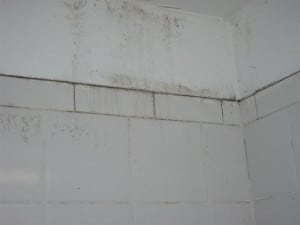 In a word, it’s called efflorescence. When people see it on their basement walls, they often refer to it as the white powdery stuff, white mold, or white mildew.
In a word, it’s called efflorescence. When people see it on their basement walls, they often refer to it as the white powdery stuff, white mold, or white mildew.
The white stuff you have on your basement walls, officially called efflorescence, is actually a deposit left behind by water. You may have noticed it on the outside of your house walls too (hopefully below the damp course, that is). The stuff is normally harmless, although you’re still advised to wear hand and face protection when you brush it off, just in case.
The big question is “why is there water there in the first place?” Walls are supposed to be dry. Having damp walls is a bad idea because the moisture could eventually cause the structure to begin to break down.
To answer the question we need to take a trip underground to the dynamic, natural world. Water – the source of life they say – is constantly on the move filtering through the earth and stone. As it travels, it picks up natural minerals and salts that it transports along and finally deposits someplace else. It’s almost as if sand and stone were made for the job!
Our homes certainly are. They are built from natural materials in the form of sand, cement and stone. Water passes naturally though these too, which is why we go to the trouble of baking bricks and painting outside walls with expensive waterproofing paint. We also add damp courses, roofs, gutters, downpipes and overhangs like eaves.
We do everything “upstairs” to keep the water away from our walls. Down in the basement it’s often a different story. When it rains the earth around the foundation becomes saturated. Many basements we’ve encountered are little better than “leaky buckets” rammed into the ground.
In a sense, efflorescence on an inside basement wall is like a friendly sentry-guard. It’s telling us that moisture is penetrating through our basement walls and leaving its customary calling-card behind. It’s likely to be historic evidence left behind as the moisture evaporated, which is why it’s normally more evident in dryer summer months.
This makes it the friend of home buyers too, especially when viewing the basement of a home in summer that’s subject to intrusive damp during winter time. The seller can try their hardest to brush it off, but there’ll always be a stain when you know where to look for it.
This is the biggest single reason to track down the cause of efflorescence if you have it in your basement, and to get rid of it before it starts working down the value of your home. It’s a sign that moisture is making it’s way inside your basement, and with that dampness often comes mold.
Not sure if you have efflorescence or not on your basement wall? Contact us here for a free in-home inspection of your basement.













